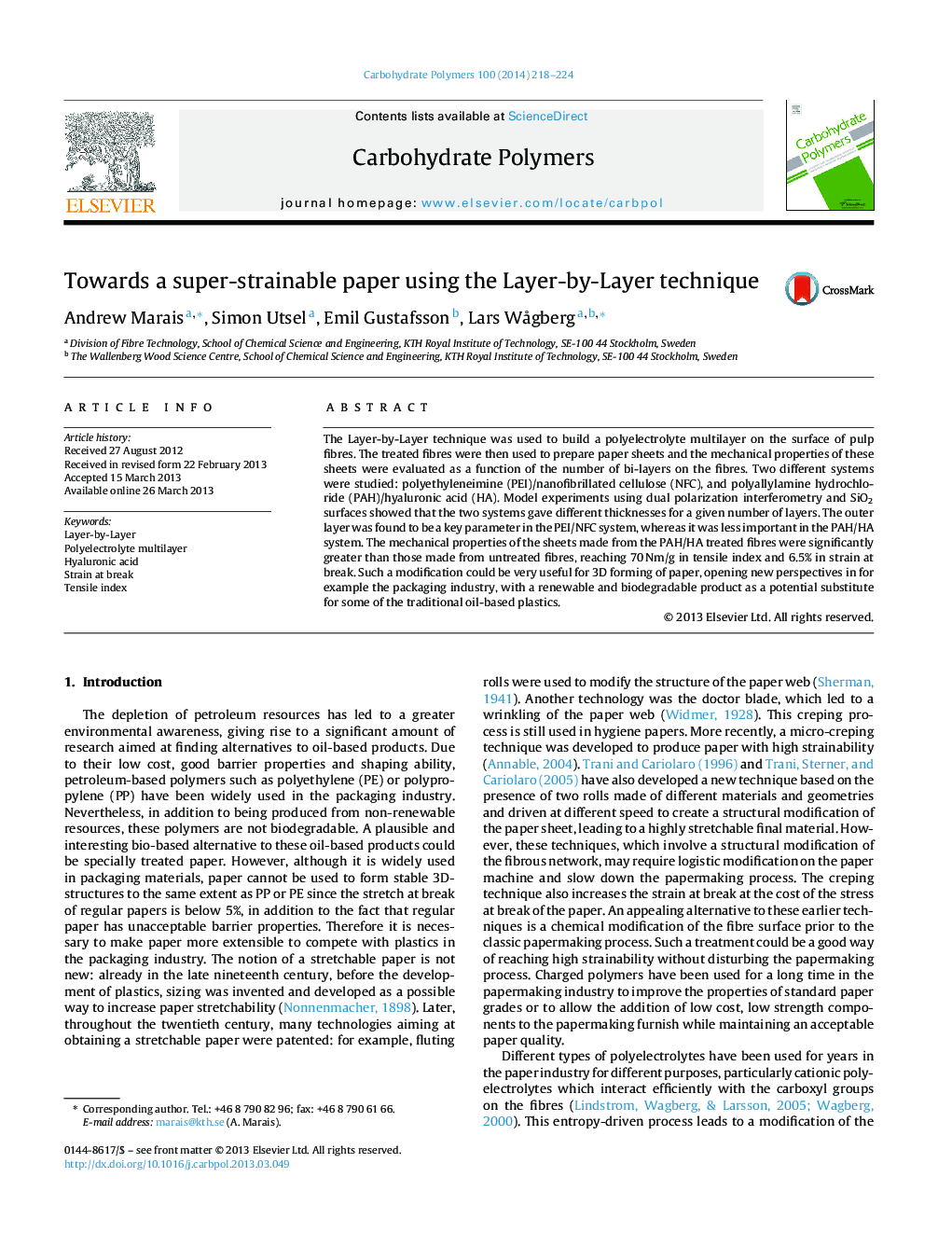| Article ID | Journal | Published Year | Pages | File Type |
|---|---|---|---|---|
| 1376110 | Carbohydrate Polymers | 2014 | 7 Pages |
•A method to increase both strength and stretchability of paper is proposed.•The layer-by-layer technique is used to build up a multilayer onto pulp fibres.•The addition of salt in the system is a critical parameter.•Hyaluronic acid/polyallylamine is the most efficient system.•Strain at break and strength of treated paper sheets are increased by a factor 3.
The Layer-by-Layer technique was used to build a polyelectrolyte multilayer on the surface of pulp fibres. The treated fibres were then used to prepare paper sheets and the mechanical properties of these sheets were evaluated as a function of the number of bi-layers on the fibres. Two different systems were studied: polyethyleneimine (PEI)/nanofibrillated cellulose (NFC), and polyallylamine hydrochloride (PAH)/hyaluronic acid (HA). Model experiments using dual polarization interferometry and SiO2 surfaces showed that the two systems gave different thicknesses for a given number of layers. The outer layer was found to be a key parameter in the PEI/NFC system, whereas it was less important in the PAH/HA system. The mechanical properties of the sheets made from the PAH/HA treated fibres were significantly greater than those made from untreated fibres, reaching 70 Nm/g in tensile index and 6.5% in strain at break. Such a modification could be very useful for 3D forming of paper, opening new perspectives in for example the packaging industry, with a renewable and biodegradable product as a potential substitute for some of the traditional oil-based plastics.
